Articles
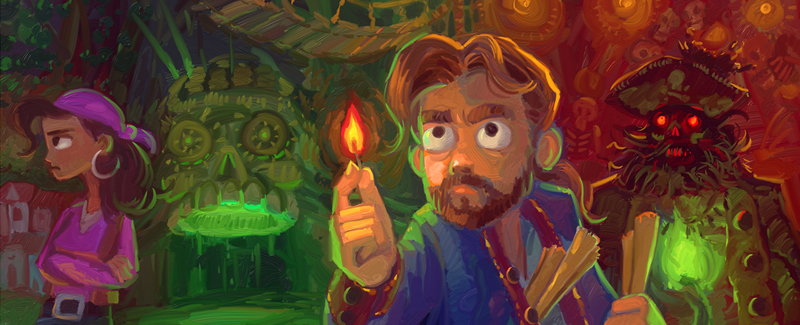
LucasArts' Secret History #6: Monkey Island 2: LeChuck's Revenge Our Review
While I've written all of these reviews under the assumption that everyone has played the games, note that I go into detail about Monkey Island 2's ending, if that is something you don't want to read about.
It's rare that a sequel surpasses its predecessor, especially when that predecessor is a universally beloved classic. Yet Monkey Island 2: LeChuck's Revenge remains one of these improbable cases. Darker, bolder, lengthier, funnier, and more complex, the game is more than a worthy follow-up – it's essentially the first Monkey Island squared. It delivers on everything that made the original great and raises the series to a new level, managing to surpass every lofty expectation you could have for a sequel to The Secret of Monkey Island, a game which itself seems untouchable. The result is, if it is indeed possible for me to measure these things, my favorite video game of all time, and I am no anomaly.
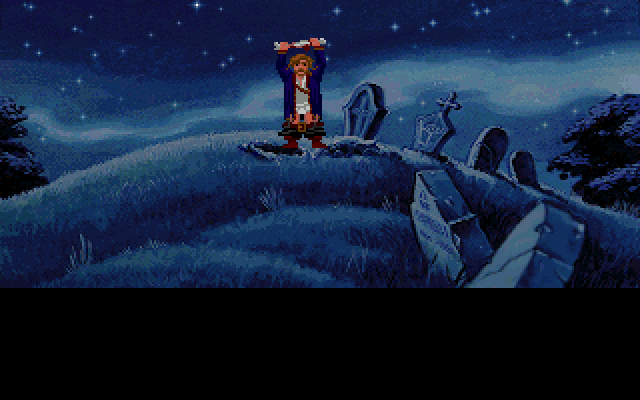
The game marked the beginning of a new era for LucasArts in more than it being the first to sport the new, independent brand name (ending the term of "LucasFilm Games") along with the iconic Golden Guy logo, an emblem once synonymous with impeccable quality. In a way, Monkey 2 was the inauguration of what some would dub to be the company's Golden Era, during which just about every title the studio shipped out, adventure game or otherwise, could be blindly assumed to be worthy of one's hard earned dollar. Indeed, to play Monkey Island 2 is to be reminded of halcyon days of consistence brilliance from the fallen studio.
Production on Monkey Island 2 began immediately after The Secret of Monkey Island wrapped, and included much of the same team, and by extension much of the same feel. (Designer/writer Dave Grossman spent a few months working with Noah Falstein on the first attempt at The Dig before rejoining on this project.) The game feels like a continuation, and that sense is surely due in no small part to the back-to-back development. Fortunately, while the game carries over everything that made the original great, it doesn't make the mistake of being a rehash. There's a whole slew of new characters (accompanied by a few familiar ones), a completely fresh, compelling story, and over twice as many locations as there were in Monkey Island 1. In fact, unless you consider a single screen that serves as a gag, Guybrush does not revisit any of the islands from The Secret of Monkey Island – the game only covers new ground, and while it works splendidly as a companion piece to the first game it stands firmly on its own two feet as a reasonably self-contained outing.
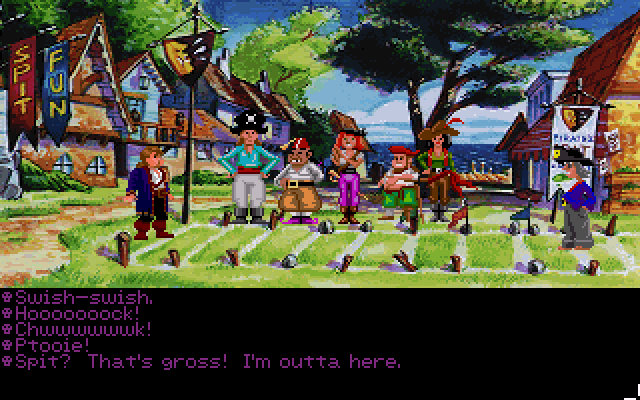
That's not to say that that attempts are made fix things that aren't broken. In, general what worked the first go round in Secret is can recognized here, often slightly improved. The humor, undeniably one of the most necessary elements to nail, is fully intact, only the writing is even sharper than it was before. Now comfortable with the Monkey Island world as a playing field, there's an effortlessness with which the writers manage to top their previous effort. Here again, one of the biggest joys is to simply talk to the characters, and as much for the unimportant stuff as for information that will help you propel forward. The dialog trees are more jam-packed with quality banter than ever, but the comedy seeps from every pore of the game – one need only to repeatedly try to "Pick up" Kate Capsize or peruse the Phatt Island card catalog, or simply stick around through the end credits to learn that.
Monkey Island 2 does not rely on fond memories from Monkey 1 to sell itself because it does not need to. As with the first game but to a greater extent, there is a saturation of detail, texture, history and background to the world that is optional when it can be, the outcome being that the depth of the game's richness becomes more apparent to the more curious and inquisitive player. Yes, the attention to detail carries an immediate allure, but like a happy version of quicksand, it sucks you in the more you fuss around.
The interface is largely the same, even identical if you're coming off of the CD version of the original game, and consequenty plays more or less exactly like Monkey Island 1. The content is the star here; the gameplay is taken for granted, which is appropriate. It's in the tone and the structure that the game noticeably evolves the series, and in that regard it really is hard to think of a sequel as successful as LeChuck's Revenge is.
Between a frame narrative where Guybrush Threepwood is regaling his grandest adventure to Governor Elaine Marley while the two are hanging around, the story of Monkey Island 2 begins on the gloomy Scabb Island where we find an older, but no less clueless version of our hero, now an experienced pirate with a coat full of loot intended to fund his latest and greatest treasure hunting expedition. No longer able to impress his fellow buccaneers with exaggerated stories of his victory against the Ghost Pirate LeChuck, Guybrush intends to secure his name permanently into pirate lore by finding the legendary Big Whoop, a mythical treasure of unparalleled value and mystery.
After thwarting Scabb's resident bully Largo (who just happens to have been LeChuck's right hand man while the infamous captain was still alive), Guybrush travels throughout the Tri-Island Area (Scabb Island, Phatt Island, and Booty Island), recovering the four scattered map pieces to the fabled isle where Big Whoop is supposedly buried. Meanwhile, Guybrush is being pursued by a reanimated LeChuck, who, now in zombie form and nastier than ever, intends to capture our newly bearded hero and exact torturous revenge on him. Since Big Whoop serves as a portal to a dimension where LeChuck cannot cross, Guybrush must race to the famous treasure before LeChuck catches up with him. Along the way, Guybrush meets up with a number of new acquaintances and has some run-ins with a few former ones (like Stan, the obnoxious salesman with a change-up in merchandise), and learns some of the most deeply hidden secrets of the Caribbean. He also proves that he can still hold his breath for ten minutes.
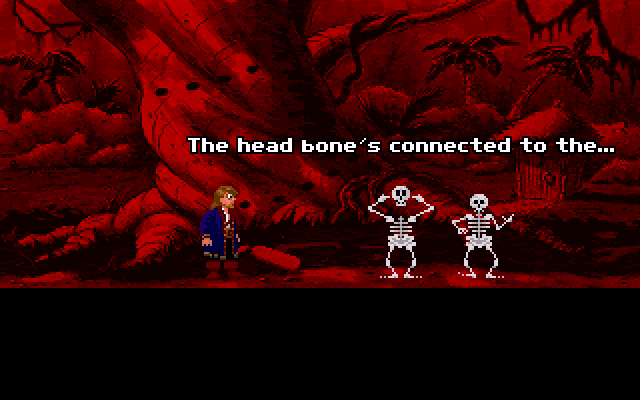
The first thing that stands out upon booting this game is the remarkable artwork. Monkey Island 2 retains the basic style of Secret, and draws from the same inspirations (with Disneyland serving as a constant source of reference), but builds on it by taking it in a slightly moodier direction that reflects a darker story. The backgrounds are a significant improvements over Secret, and just plain gorgeous.
This of course is a credit to the efforts of the supremely talented artists (including Peter Chan and Steve Purcell), but advancements in technology were also factors in realizing the game's stunning images. During the time Monkey Island 2 was in development, the notion of being able to scan paper-drawn illustrations, as opposed to rendering them solely on a computer, was open to the team. While the primitive state of this technique came with the trade-off of heavy pixelation artifacts, the illustrations hold up remarkably well. While one can't help but wonder what a version of the game with high resolution backgrounds would look like, as-is Monkey Island 2 is a big leap in the visual progression of the SCUMM games.
The ante has upped in the animation department as well. Animation is first off more prevalent, with Guybrush (now in attire reflective of his wealthier status) armed with an array of reactions, ranging from head/beard scratching to sweat wiping and eye-popping. While the close-up character portraits from the original have been forfeited, the game has a number of set pieces of sorts (the temporary resurrection of Rapp Scallion and the explosive end of LeChuck's Fortress standing out in my mind) that, like any other example of quality animation, impress without the age of the game ever entering into your thoughts as relevant.
The character designs (some of it the work of future Monkey Island project leader Larry Ahern) are on the whole a bit more impressive than the first game's, with an every so slightly more exaggerated look to the cast. Some of the recurring characters, such as Guybrush and his nemesis have undergone makeovers reflective of the game's tone and of the characters' individual growth (from a pirate wannabe to a questionably legitimate pirate; from a ghost to a rotting zombie). On the whole the characters look and perform better than they did in the first game, where the cast was of a more modest size. Rounding out the art side of the game are the smaller, subtle effects, the products of gradually improving tech - a lightning flash in a cemetery or the glow of light sources contribute greatly to the overall effect without calling attention to themselves. Every facet of the art, obvious and subtle, elevates the experience.
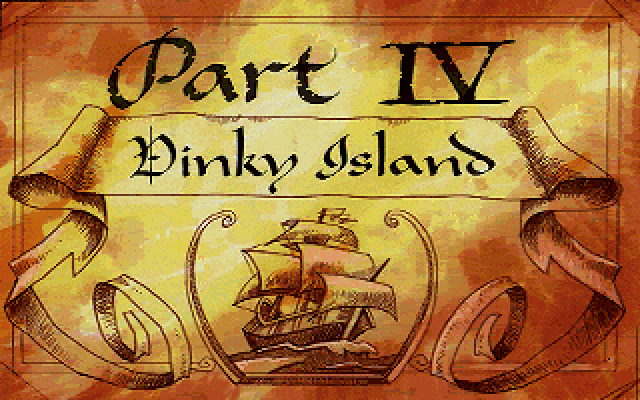
I've made the observation that this game is pretty much everything its predecessor was, except better. This holds true under the hood as well as for what's displayed on screen, and the impressively complicated design of this sprawling game deserves special mention. The game's second section, entitled The Four Map Pieces, constitutes the bulk of the game (which, by the way, is a good deal longer than Secret, and probably one of the longer adventure games out there), and it is a huge and pretty nonlinear segment in which Guybrush sails back and forth between three islands at will. The four scattered Big Whoop map pieces are obtained by tracking down the original members of the crew (or their successors, in one case Guybrush's old flame Elaine Marley), who divided the map in an effort to keep the treasure hidden. This area of the game is the heart, and is it noteworthy for its complexity, ambition, and innovation - there a sort of proto-version of modern, free-roaming games to be glimpsed here.
The island-hopping also makes the puzzle design more multilayered. A side-effect is that there almost always ore than one thing to do, which is helpful when you get stuck on one of this game's puzzles - you work toward something else while you're thinking things through on the goal that's got you stumped. While sometimes the game can be overwhelming, Monkey Island 2 is a premiere example of an adventure game that manages despite its size to be extremely nonlinear without sacrificing the coherency and focus of a strong narrative.
Monkey Island 2's puzzles are also on the whole a bit trickier than those of its predecessor. This is partly a natural artifact of the game being less linear than the original, but there also seems to be a conscious uptick, and that's either welcome are undesirable depending on how you like your adventure games served. Fortunately, the game still mostly stays on the right side of logical, even in some of its most fiendishly difficult puzzle, like the multi-part solution to winning a spitting contest. Although this doesn't account for the use of a literal monkey wrench or a certain situation in which Guybrush effortless stuffs a large animal in his coat pocket, the game's puzzle design in general is based in some kind of logic and serves to move the story forward. Most importantly, the solutions are invariably satisfying and entertaining
In what seems almost self-recognition of the stiffer challenge, the game presents a difficulty selection screen upon startup. Offering two options, dubbed "Regular" and "Lite" modes (or, as I would call it, the real game and the truncated game). Unlike with Loom, the mode you choose affects the puzzle themselves; in some cases, an entire puzzle sequence is simplified, and in others removed altogether. This is not all accomplished in some ham-fisted way, with no regard for how the alteration would affect continuity or flow effort was actually put into the design differences between the two versions. While I can't really recommend the Lite version except for the interest factor, I have to respect the effort (which is still somewhat of a oddity) to balance an adventure game for people of different experience levels.
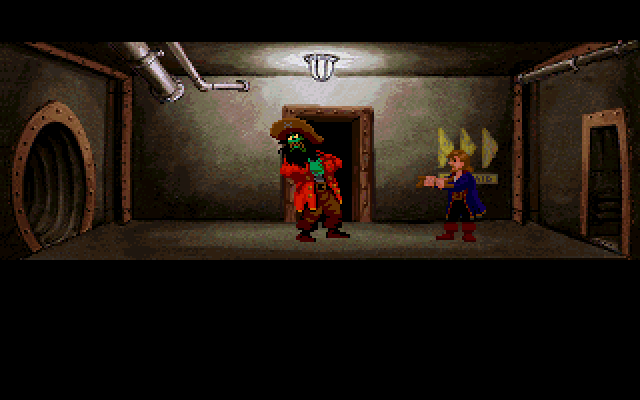
The music is owed more than a passing mention not only because the compositions are excellent but because of how they're implemented. Monkey Island 2 ushered in a brand new technology that changed the way the relationship between gameplay and soundtrack could work. iMUSE (Interactive Music Streaming Engine) is the name of that technology, an audio engine (the labors of Peter McConnell and Michael Land) developed with the goal of the music dynamically responding to the actions of the character. The dynamic tracks would be able to transition gracefully, replacing looping tracks that enter and exit a setting with a start and a cut. Armed with this, yes, revolutionary new tool, Monkey Island 2 introduced gamers to the possibility that music could be not merely be a disposable background element, but an active contribution to the immersion. In this case, it adds to the atmosphere immeasurably, in a way that was not possible before.
As for the tunes themselves, they play much like all other aspects of the game – reminiscent enough that it can't be confused for anything but a Monkey Island soundtrack (the main theme, LeChuck's theme, and even the ditty for the Part title cards are reprised), but original enough that it's hugely enjoyable as a standalone work.
Land, McConnell, and Clint Bajakian (generally considered the holy trinity of LEC composers), furnish a soundtrack that is all-around great. When fifteen year old MIDI music is so good that you still want to listen to it in a non-nostalgic way, that speaks for itself. Another thing to note is that in this game music is always playing, excepting a few moments where its absence is called for as an intentional effect. But beyond being more prevalent than was the case with Monkey 1 (which has many scenes of silence), the music here is more ambitious. While the tunes in Monkey 1 were charming and well-suited to the environments, the music in Monkey 2 has such an integral role in the game's overall effect that it's truly a inseparable component. I'll sometimes run the game just to get a fix of the Woodtick themes, which is a combination of great music and arguably the greatest use of iMUSE ever, despite being the first. Simply put, the game is gifted with a ridiculously good, and soundtrack.
Now what can I say about flaws, when my feelings on the subject are so similar to those on Monkey Island 1? Well, I know there's one thing you can't fail to bring up when discussing LeChuck's Revenge. This game is somewhat infamous for its rather bizarre ending. It occurs somewhat abruptly and depicts Guybrush as a child who had been lost in an amusement park, imagining his adventures. While the game vaguely implies that this revelation is merely the result of a curse LeChuck has placed on Guybrush (an explanation that the future games depended on for their stories), it's abundantly clear that there's a bit more going on with the game's unusual denouement. The meaning of this ending has been interminably debated by fans to an insane degree, and many of the theories tie into the discovery of the titular Secret of Monkey Island. Be sure to read some of the later sections of this article for more fun on that topic.
Aside from the controversy over the ending's interpretation, some people have criticized its strangeness as an anticlimactic way of wrapping up an otherwise excellent and well-paced game. While I can sympathize with such an opinion I've never really agreed with it – I've always found the sheer craziness of the ending to be a delight. And no matter how you feel about it, the final few minutes can hardly succeed in rendering the game unsatisfying as a whole what with everything that has preceded it. The ending of Monkey Island 2 may be one of the wackiest in video game history, and for me at least it works exactly for that reason, though everyone's mileage varies.
The Secret of Monkey Island is as important for its impact on the genre as it was for being a great game. As a direct sequel, it might be rationally assumed that LeChuck's Revenge isn't as influential a game as its predecessor. While it's true that it can't have that Monkey 1's freshness, LeChuck's Revenge nonetheless manages to be even more inventive than the original, and that's saying something. Its quality is so high, in fact, that one would have stable ground to argue that this game (Yes, the bearer of this web site's namesake!) has made an overall greater impact on legacy of the series. The memorable scenes in this game are an embarrassment of riches, and can lay claim to some of the best moments in a series with no shortage of great moments. While Secret is a dethronable classic that introduced us to this endearing version of the Caribbean, LeChuck's Revenge is often the game that springs to mind when asked to finger the best the series has to offer.
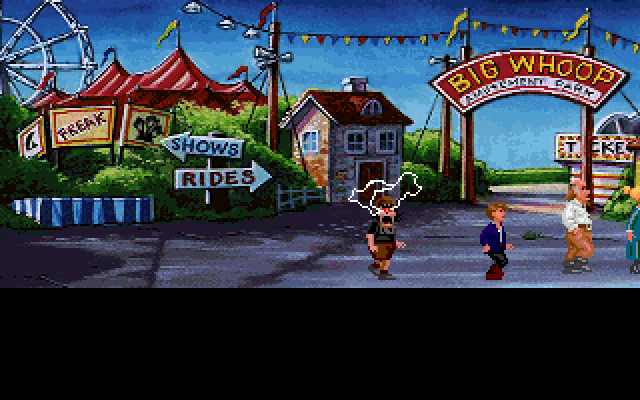
I've said that this is my favorite video game of all time, and it is, but when looking at all the LucasArts graphic adventures it's somewhat pointless to even try to determine a favorite. A problem I've had with these reviews as I've revisited these games for the Secret History series is one that's only going to get worse as I go on: I'm running out of superlatives. There are no games I feel stronger about than these masterpieces, and these articles are a platform for exalting and extolling them, probably to a like-minded crowd that needs no convincing, who will respond by changing, "Right on!" And so what?
Monkey Island 2 is top shelf entertainment, magic and pure fun. It is the best. Play it, love it, and cherish it, because it's not the kind of game that comes along more than once.
By Jason, whose Mom still only allows him to drink near-grog
Five out of five Murray skulls
Pros: Sequel to a classic game that’s better than the original; writing is sharper than ever, making for one of the funniest games out there; puzzles are clever and fun; art is sensational; huge and complex without feeling thin; amazing soundtrack; insane ending.
Cons: Some of the puzzles require leaps in logic; Direction can occasionally be inadequate.